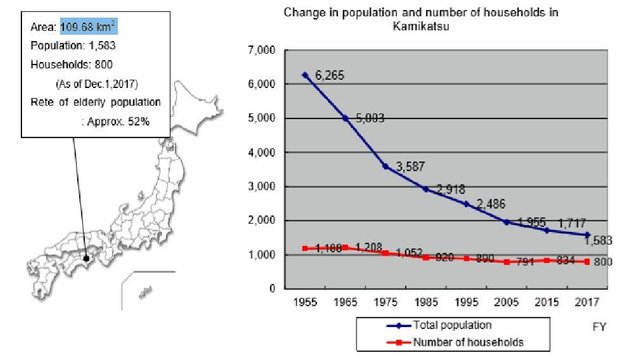Introduction – Zero Waste Management

Waste management is not new and it has been passed through a series of innovations started with open dumping, being the first wave before 3000BC to sixth wave of zero waste systems at present through various initiatives such as behavior change, sustainable consumption, cradle-to-cradle design, 100% recycling/resource recovery. Zero waste systems include a holistic approach of cradle-to-cradle closed-loop design systems, sustainable resource consumption and resource recovery from waste.

It took human history over 3 million years to reach 1 billion people in the early 1800s. Now, we gain 1 billion people every 12–14 years and the world’s population grows by more than 200,000 each day. Currently, half the world’s population lives in urban areas and almost all regions of the world will be predominantly urban by the middle of this century. Urbanization is higher in high-consuming counties compared to low-consuming countries.
The present consumption-driven society produces an enormous volume of waste every day and it has negative impact to our environment. Continuous depletion of natural finite resources by urban populations is leading the globe to an uncertain future. Therefore, to prevent further depletion of global resources, sustainable consumption and a strategic waste management system would be required.
According to the Japanese Ministry of the Environment’s annual report Waste Disposal in Japan, the country was a recycling-oriented society up until the 1950s, with greater percentages of waste being recycled than at present.
As the country’s postwar economic boom began, however, factories began discharging large volumes of industrial waste, and urban development sites similarly began producing large amounts of construction debris. Waste volumes in Japan increased approximately fivefold in 20 years, from 8.9 million tons in 1960 to 43.9 million tons in 1980.
Since the 1980s, however, fewer local governments have continued the practice of treating waste by burning garbage out in the open. Serious efforts at waste management began in Kamikatsu as well in the 1990s.
Kamikatsu, Tokushima Prefecture, was the first municipality in Japan to promulgate a Zero Waste policy. Town residents sort waste into 45 types in 13 categories, and managed to recycle 81% of all their refuse in 2016. Kamikatsu’s Waste Station is a center for interaction across the region.
Just four decades ago, this small island nation had become an environmental cautionary tale, some of its cities synonymous with the high health costs of rapid postwar industrialization.
Kamikatsu – Lifestyle Shift for Sustainable Living
In 1995, Kamikatsu began offering financial assistance to residents for purchasing household raw garbage processors, a pioneering initiative in Japan at the time. Each household could purchase one such unit at a dramatically discounted cost of only ¥10,000. Adoption rates of 97% meant that it was possible to dispose of all of the town’s raw garbage at the very households producing it.



Images: Kamikatsu’s waste station manager, Kazuyuki Kiyohara. (ABC News: Yumi Asada)
In 2003, the local government in Kamikatsu, Japan decided to require that all residents comply with a new, rigorous recycling program – perhaps the most rigorous in the world.

Since then, the town composts, recycles, or reuses 80% of its garbage. It may not technically be 100% zero waste, as the remaining 20% goes into the landfill, but it’s a remarkable achievement for an entire community, in such a short amount of time. The impacts have been positive – cutting costs for the community drastically and it helped to achieve the sustainable living in this region.
At first, it was difficult to become accustomed to the new rules. “It can be a pain, and at first we were opposed to the idea, if you get used to it, it becomes normal” says resident, Hatsue Katayama.
Vision 2020 – Zero Waste Town
The first zero-waste brewery has opened in Kamikatsu, called Rise and Win Brewery. The brewery itself is constructed of reused materials and environmentally friendly finishes. By 2020, Kamikatsu hopes to be 100% zero waste, with no use of landfills, and to forge connections with other like-minded communities in the world, spreading the practice of zero-waste.
The categories cover everything from pillows to toothbrushes as the town aims to recycle all its waste, sending nothing to incinerators. The process can be onerous-not only are there dozens of separate categories, but items like plastic bags and bottles must washed and dried to facilitate recycling.
The 2,000 people of Kamikatsu have dispensed with public trash bins. They set up a Zero Waste Academy to act as a monitor. The town dump has become a sort of outdoor filing cabinet, embracing 34 categories of trash – from batteries to fluorescent lights to bottle caps.
According to Akira Sakano, Deputy Chief Officer at Zero Waste Academy in Kamikatsu, the town has a kuru-kuru shop where residents can bring in used items and take things home for free. There is also a kuru-kuru factory, where local women make bags and clothes out of discarded items.
Kamikatsu is already close to achieving its goal, recycling about 80 per cent of the 286 tonne of waste it produced in 2017, far more than the national average of 20 per cent.
Every city across the globe should learn from the various eco-friendly initiatives of Kamikatsu, which not only cost-competitive but also teach us how to make our living sustainable without destroying our mother nature.